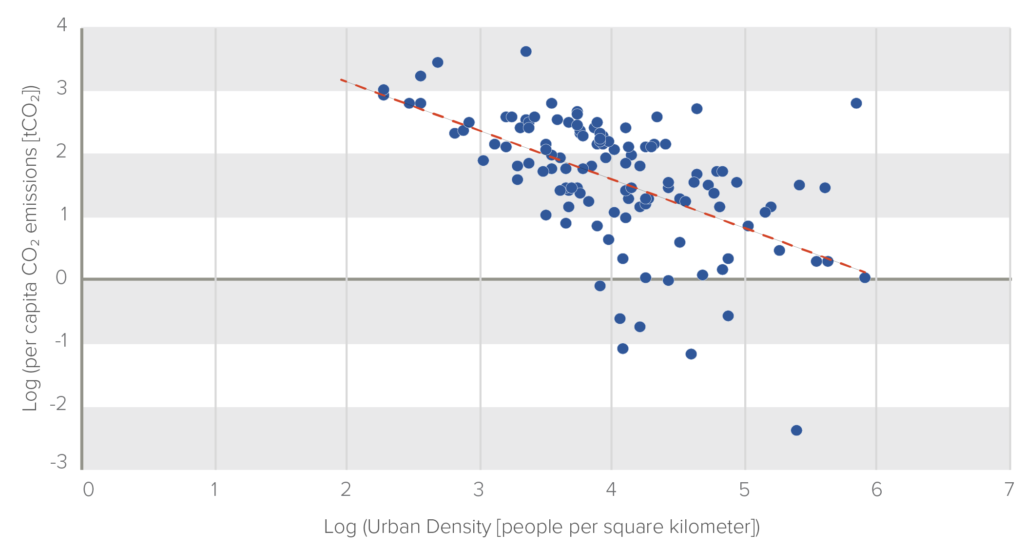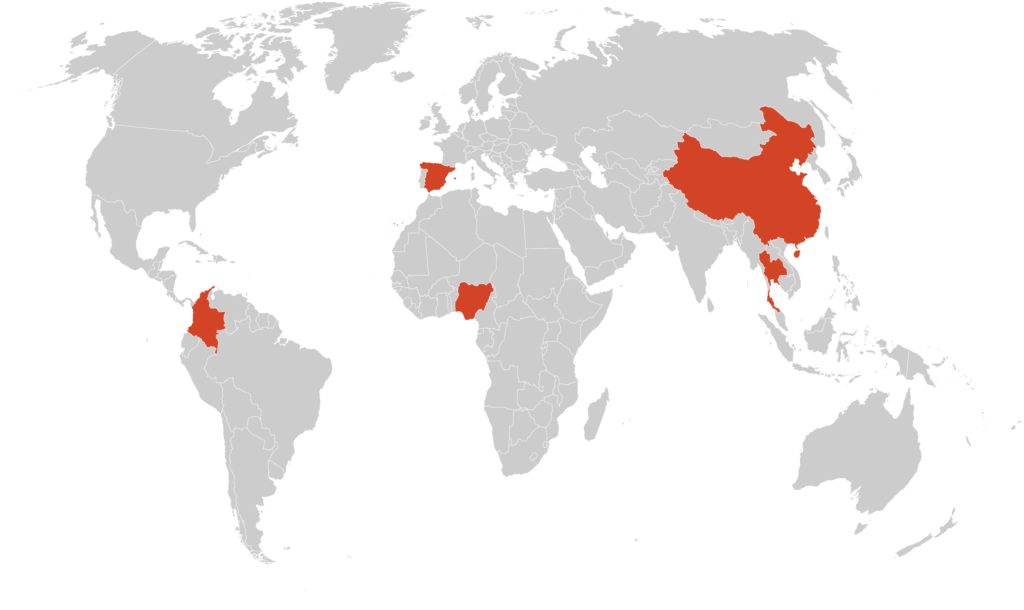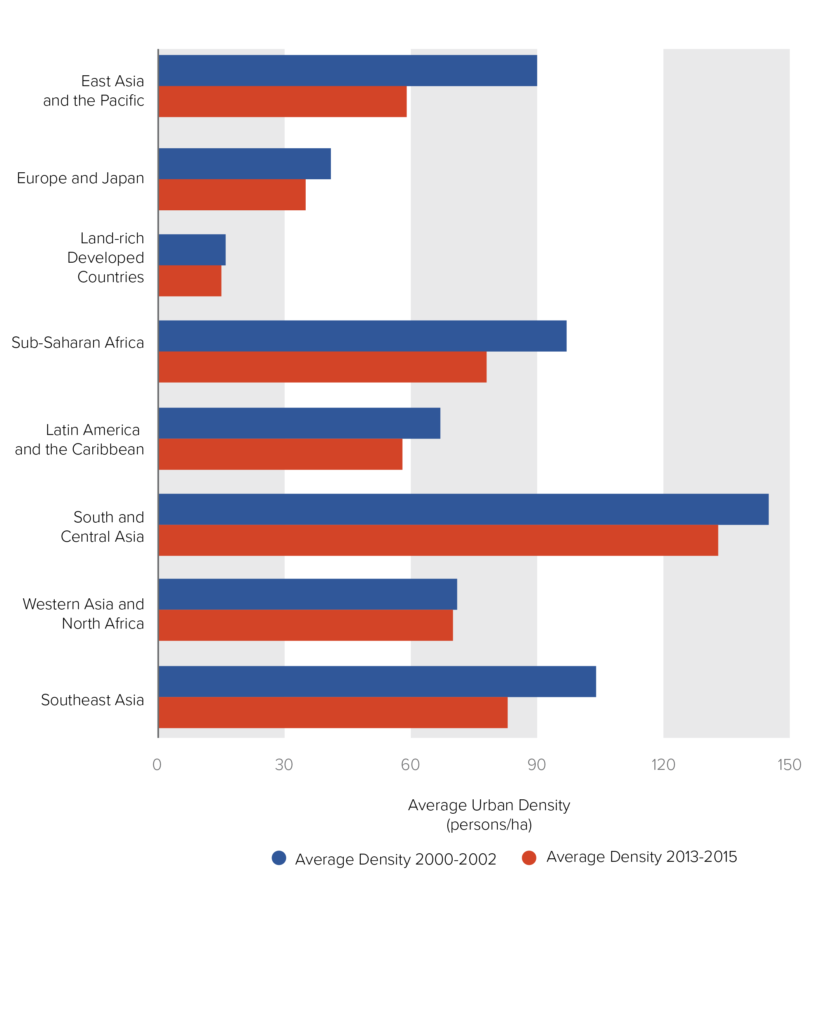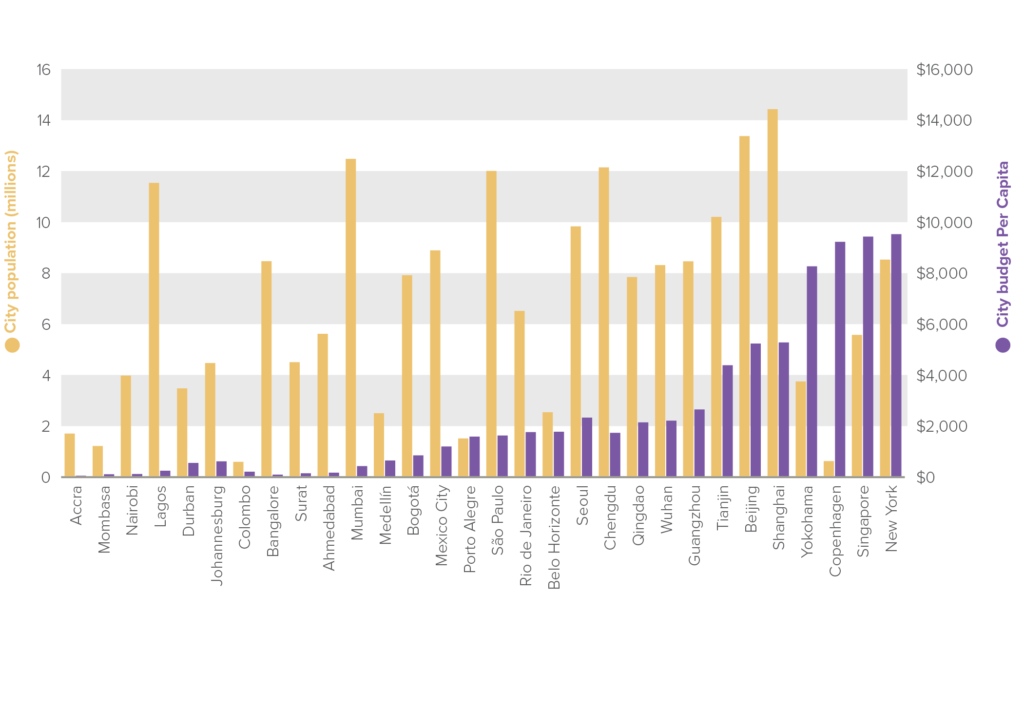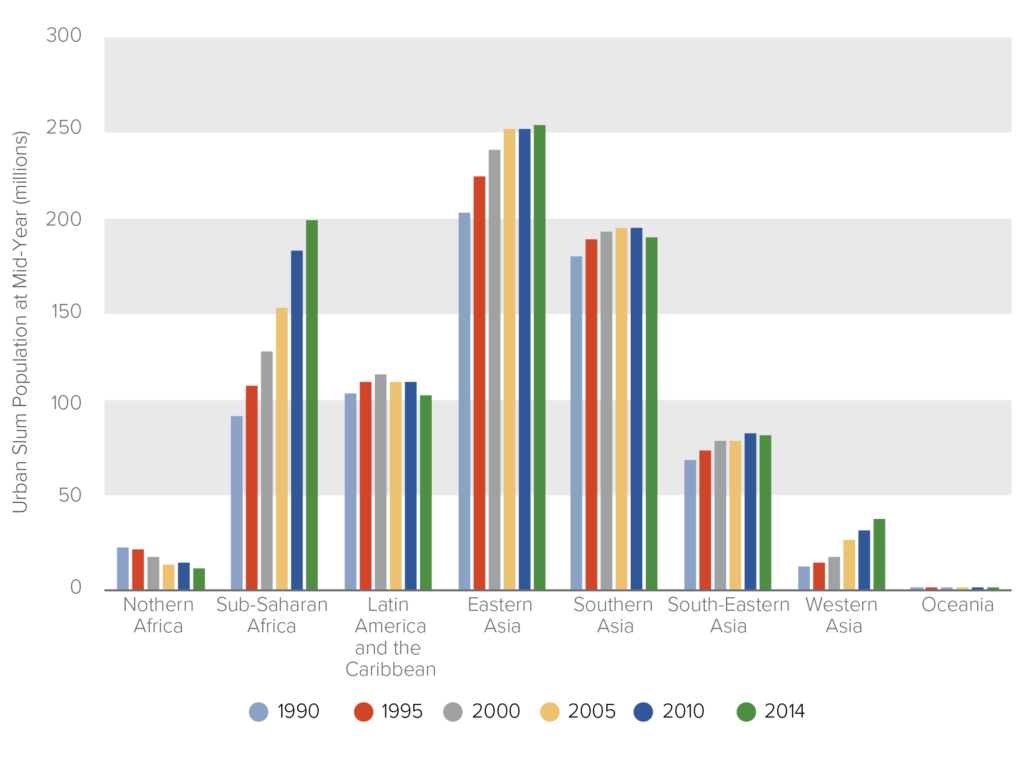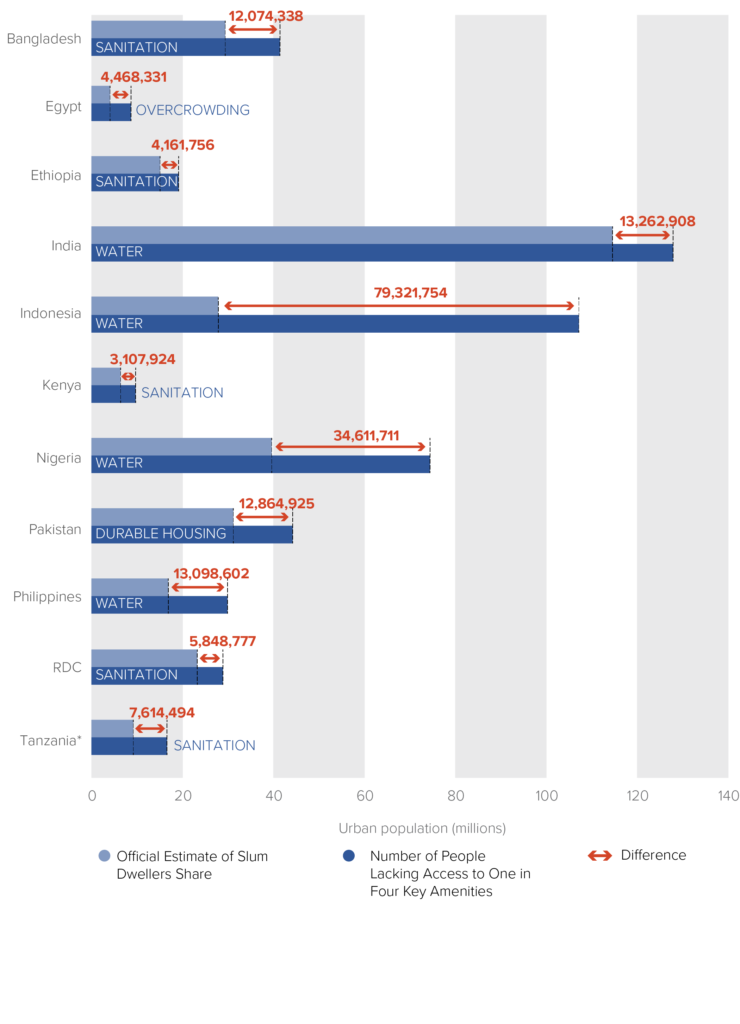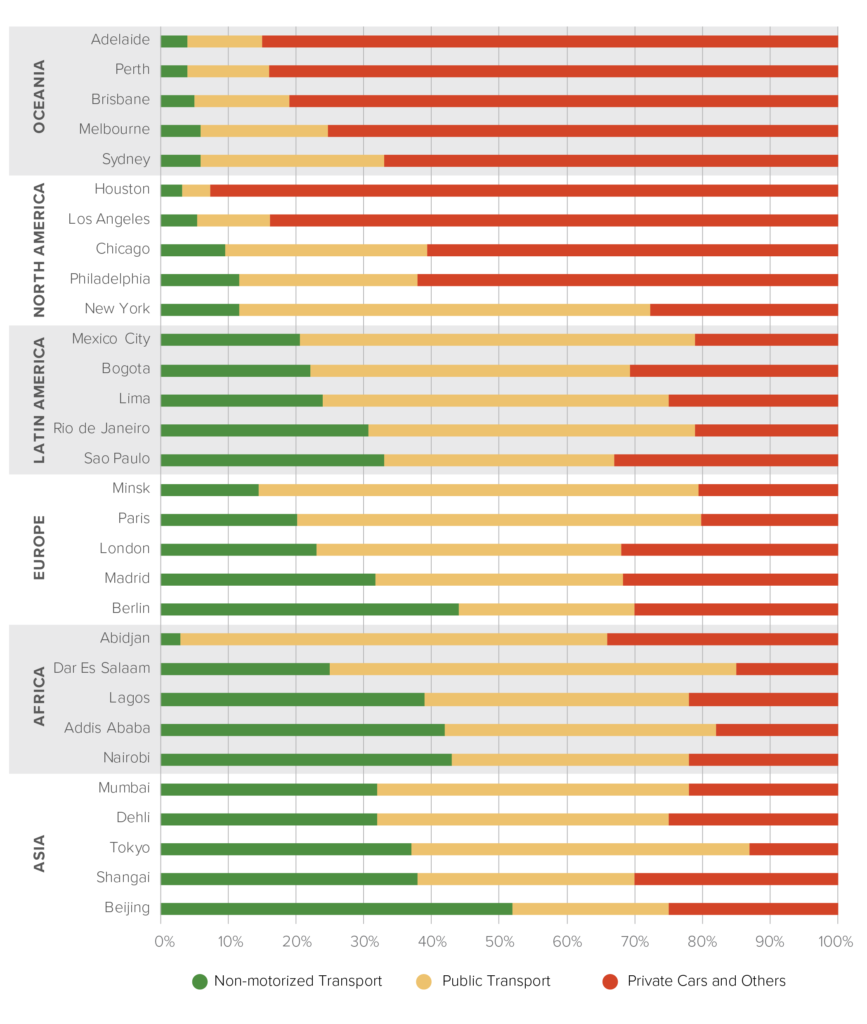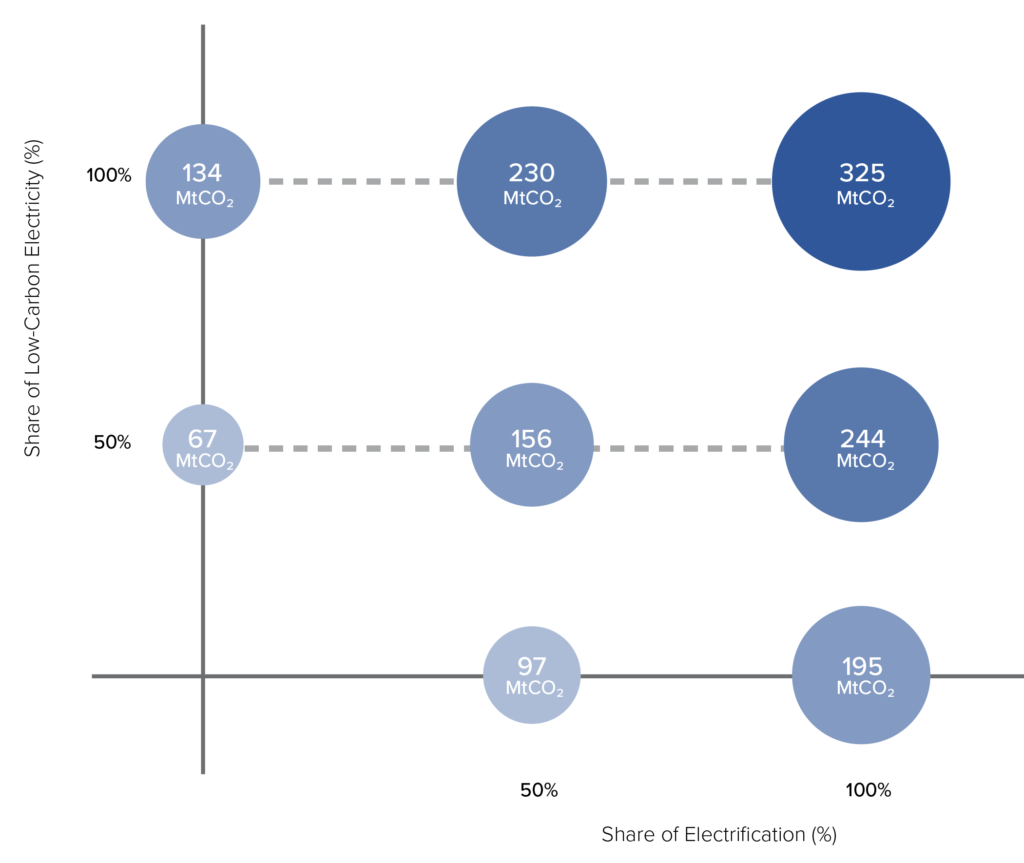Section twoCities
Introduction
Cities, with their concentration of people, economic activity, and infrastructure, offer unique opportunities to reduce poverty, deliver greater prosperity, and tackle climate change. Today, 3.9 billion people live in urban areas, and the urban population is expected to grow by another 2.5 billion people by 2050.1 By then, two-thirds of the world’s population will be living with the infrastructure and planning decisions we make today. If done right, the cities of tomorrow can be places where people enjoy healthy, active, productive lives. More compact, connected, and coordinated cities are worth up to US$17 trillion in economic savings by 2050.2 Cities can be engines of economic growth, generating opportunity and wealth for the whole country. And their density and dynamism offer governments the possibility of achieving human development goals while reducing environmental impacts.
Yet urban areas are not fully realising their enormous potential to drive sustainable development. Nearly a billion urban residents live in informal settlements without access to decent housing, secure tenure, or improved water and sanitation.3 Urbanisation is occurring in places with much lower average levels of income than historical averages, particularly in sub-Saharan Africa,4 and new urban areas are emerging. Over 60% of the land projected to become urban by 2030 has yet to be developed,5 and smaller cities are growing faster than mega-cities.6 More mature cities are struggling with chronic congestion and toxic air pollution, yet private car ownership is projected to increase by as much as 60% in developed countries and up to 500% outside the OECD by 2050.7 For cities to achieve their potential, it will be important to reduce the expected pressures resulting from the explosive rural-urban migration by balancing sustainable urban development alongside sustainable rural development.8
Tackling inequality alongside climate change and other environmental challenges is central to sustainable urban development. Soaring house prices are also contributing to growing inequality within cities and countries but there are also other drivers.9 More extreme weather events – from extended heat waves to rising sea levels and flood risk – are exacerbating inequalities and reshaping sustainable urban planning and development.10 The higher population densities of urban areas increase the need for risk-reducing infrastructure, such as drains, sewers, piped water, and paved roads, to reduce vulnerability to climate change. These systems must be extended to the rapidly growing urban population.11 Balancing urban and rural development and managing urbanisation well will also be essential for ensuring resilience. Generating positive momentum from in-migration for better growth is possible but it will require adequate capacity in housing, transportation and other infrastructure and social services as well as consultative mechanisms for including migrants and other marginalised communities in decision-making. Institutions for planning, provision of infrastructure and other services will need reforming to ensure that all city dwellers enjoy a high quality of life and can enhance their economic productivity.
Unlocking the power of cities to deliver economic development in a sustainable way requires ambitious action. At its core, this depends on compact, connected, and coordinated use of urban land. Promoting density is critical to avoid locking in sprawling, inefficient and climate-vulnerable modes of growth, but the kind of density matters. ‘Good density’ means functionally and socially mixed neighbourhoods with access to green spaces, comfortable, affordable, and climate-smart housing for all, and high-quality public transport networks.12 When done right, compactness improves residents’ access to jobs, services, and amenities and, compared to sprawl, could reduce infrastructure capital requirements by over US$3 trillion between 2015 and 2030.13 Densification is also more carbon efficient (see Figure 9) and resilient to climate change and disasters.14 Promising examples of good density in action can be found all over the world today from Barcelona’s car-lite Superblocks (see Box 25) to Singapore’s green canopies (see Box 26), which are estimated to build resilience by reducing local peak temperatures by as much as 5°C, while also reducing energy costs associated with air conditioning.15
 The 2018 Report of the Global Commission on the Economy and Climate
The 2018 Report of the Global Commission on the Economy and Climate